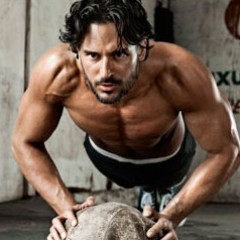
Before you develop a training plan, it's essential to know your strengths and weaknesses. But if you're just starting out as a coach, or if you're working on your own plan, where do you start? Here are some basic exercises and drills for athlete assessment to get you going. Check out the video player above for an additional exercise, the Overhead Weighted Squat, and learn how to check for imbalances. 1. Supine Corpse: Pelvic Tilt, Core Weakness Have the athlete lie down on his/her back and breathe normally. Look at how the pelvic and lower back respond to breathing. If the athlete's back does not stay on the ground during normal breathing, it indicates weakness in the core and pelvic tilt. Develop a program that will adjust the tilted pelvis and strengthen the core.
2. Overhead Wall Squat: Imbalances, Trunk Stability and Core Strength
Have the athlete stand with his/her toes touching the wall, then raise his/her arms while squatting. Knees should not touch the wall. Have the athlete go as low as possible without touching the wall or falling down. This exercise identifies squat imbalances in the hip abductors and quads. Most athletes tend to over-pronate when they squat, opening their legs as they perform the eccentric motion. Having a hard time keeping the arms up while squatting low reveals issues with trunk stability and core strength.
3. Dot Drill: Hamstrings and Ankles
Place five dots in front of the athlete in a configuration similar to this. Have the athlete stand on one leg, bend down and touch the dots with his/her opposite hand.
4. Plank/Push-Ups: Upper Body, Abs, Lower Back
Have the athlete assume a plank position. Look for errors in form. The abs and buttocks should be tight, the hands placed right under the shoulders with fingers spread, and the back should be straight while lowering. Improper form may indicate weakness in the shoulders, abs and lower back. Then have the athlete do as many Push-Ups as possible in a minute, to assess upper-body strength. RELATED: Fix Bad Posture and Increase Athletic Performance












No comments:
Post a Comment